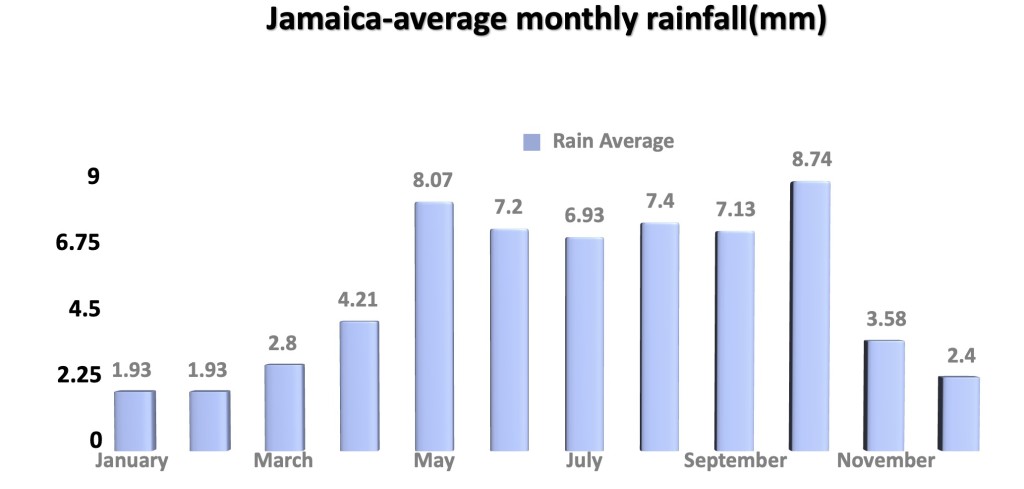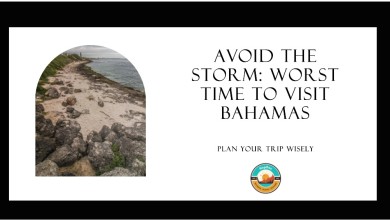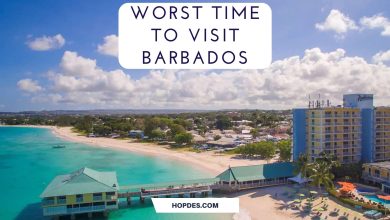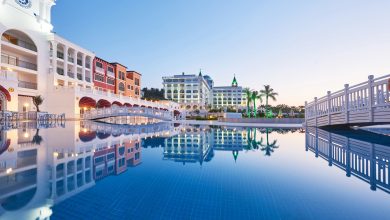
Tourists are drawn to Jamaica like a magnet because of the island’s natural beauty. It is the third largest island in the Caribbean and a popular tourist destination due to its beautiful environment and vibrant culture. Visitors come to Jamaica due to the island’s renowned cuisine and the throbbing rhythms that pervade the country’s diverse cultural traditions.
Keep in mind that even this tropical paradise might lose its luster and stop offering its numerous pleasures for a while, so tread carefully. Learn with us when it’s the worst to visit Jamaica!
The Worst Time to Visit Jamaica
The weather in Jamaica can be extremely unpleasant at certain seasons of the year. The months of June to November are not the right time to visit Jamaica. During these months, there are high chances of Hurricanes and intense rainfall. So why exactly is this one of the worst times to visit Jamaica?
- Limited Outdoor Activities: As nature unleashes its torrential downpours and hurricanes dance across the region, outdoor activities like snorkeling, diving, hiking, and exploring nature reserves come to a screeching halt. Safety concerns take precedence, limiting the array of experiences awaiting eager visitors.
- Unsafe Beaches: Unrelenting rainfall and stormy weather take a toll on Jamaica’s picturesque beaches. Erosion becomes a formidable adversary, while the once-clear waters turn murky and unsafe for swimming. If your heart longs for sandy shores and water adventures, it’s wise to steer clear of the rainy and hurricane seasons.
- Delays and Cancellations: Mother Nature’s fury can wreak havoc on flight schedules. Delays and cancellations become an unwelcome companion as inclement weather makes its presence known. This disruption not only causes travel headaches but also potentially drains your wallet with unexpected expenses and altered itineraries.

While hurricanes occur infrequently in Jamaica, averaging about 5 times per year, certain regions like Saint Thomas, Westmoreland, and St. Elizabeth are more susceptible to being heavily impacted.
For instance, in 2022, Hurricane Lisa posed a threat to the Caribbean Sea with maximum wind speeds of 148 km/h and a diameter of 259 km. Thankfully, it stayed around 125 km south of Rocky Point in Clarendon and avoided making direct landfall in Jamaica.
To stay safe while traveling to Jamaica, it is essential to adhere to the advice given by reputable organizations like the National Emergency Management Organization. Providing warnings and ensuring the safety of the public are important functions of this group. For instance, on October 31, 2022, the Belizean Prime Minister issued a storm notice for the entire country’s coast in his capacity as Chairman of NEMO.
Suggested Reading: Worst Time to Visit Las Vegas
Additional Challenges: Worst time to Visit Jamaica
When venturing to Jamaica during its least favorable period, be prepared to encounter a handful of additional obstacles along the way:
Heat Stress
When considering the worst time to visit Jamaica, one significant challenge that visitors may face is the occurrence of heat waves. Like other Caribbean countries, Jamaica experiences a heating season that typically spans from May to October each year.
However, the hottest month in Jamaica is July, with an average daily maximum temperature of 32°C and an average low of 26°C. The intense heat in this month can have adverse effects on health, with the potential for severe consequences, including fatalities.

In 2022, the Health and Wellness Ministry issued a warning due to exceptionally high temperatures during the summer months, making it a less favorable time to visit the country. This witnessed an unprecedented surge in temperatures, exacerbating the discomfort caused by the heat. This situation poses a significant risk, especially for vulnerable groups such as children under six years old, physically weak, and bedridden individuals.
Looking ahead, the Meteorological Service predicts that the period from September to November 2023 will see higher than normal night-time temperatures. To add to the challenge, there is a staggering projection of at least 15 to 20 heatwave days expected through the end of August 2023.
Rainstorm Hiking
Jamaica has more to offer than simply gorgeous beaches, including the breathtaking Blue Mountains, but the wet season, which lasts from June to November, brings with it rainy weather that can be hazardous for hikers.
When the paths become slick and muddy, there is a higher chance of accidents and injury. Making wise walk decisions and picking suitable, rain-resistant paths is crucial.
Even if you plan to visit Jamaica during this time, look for well-maintained, short, secure trails with gradual inclines and no exposed or hazardous cliffs. These Jamaican trails continue to offer breathtaking views despite the ongoing rain, which is sure to rekindle your love of trekking. Storm strength tends to peak around the end of the wet season, particularly in August.
It’s crucial to remember that weather patterns might fluctuate in different parts of Jamaica. For example, Negril typically has the greatest annual average rainfall, with 62 inches, even though Kingston and Ocho Rios get more rain later in the season.
Planning your hikes following these weather trends might make your time spent discovering Jamaica’s natural beauty safer and more pleasurable.

For advice on rain, be sure to check our Travel Tips Section.
Flash Flooding
The wet season, which spans from June to November, brings heavy showers and thunderstorms to the island. According to the reports from the Meteorological Service of Jamaica, tropical storms below hurricane strength are more common and can result in periods of intense rainfall, strong winds, and flooding.
During the peak of the wet season, which falls between August and October, Jamaica experiences an increased risk of floods. This period is characterized by an average of 9 rainy days per month, while approximately 7 hours of sunshine grace the island each day.
In September 2022, the island experienced a flash flood warning due to the inclement weather associated with tropical storm Ian, which later escalated into a hurricane. The warning was issued by Met Service for low-lying and flood-prone areas in several parishes, including St. Mary, Portland, St. Thomas, Kingston, St. Andrew, St. Catherine, and Clarendon.

Related: Absolute Worst Time to Visit London [Climate – Crowd]
Off Season
The off-season, sometimes referred to as the low season, runs from mid-April to mid-December (April 16 through December 14), and it comes with its own set of considerations. It is significant to note that around this season, rainfall tends to be heaviest in the northeastern region of Jamaica, notably in places like St. Mary and Portland.
This increased precipitation can lead to the occurrence of floods and landslides in these regions. Additionally, certain central areas of the island, such as Moneague in St. Ann and Cave Valley in Clarendon, may also experience flooding due to the emergence of underground rivers or systems during heavy rains.
Moreover, poor drainage systems in Kingston can result in significant flooding in the capital city. If you choose to visit these areas during the off-season, there is a higher probability that your experience might be negatively impacted.
Editorial Suggestion: Worst Time to Visit Rome, Italy – Avoid These Months!
When is Jamaica Pricy and Crowded?
In terms of crowding, the winter months from January to March can be a less favorable time for visiting Jamaica. During this time, hotel room costs can soar, often exceeding $700 per night. Three significant festivals, Rebel Salute, Accompong Maroon Festival, and Jamaica African Dance Arts and Culture Festival, cause a spike in island visitors.

Additionally, substantial numbers of tourists are attracted by occasions like Bob Marley Week, Jamaica Jazz and Blues Festival, Jamaica Rum Festival, and Bacchanal Jamaica Carnival. For spring break in late March, beach lovers are particularly drawn to Jamaica’s coastline.
Because the hurricane season has ended and the weather is great with lovely breezes and temperatures between 82 and 87 degrees Fahrenheit, this time of year is well-liked.
It is important to keep in mind that while January through March may offer pleasant weather and exciting events, the high number of visitors may cause overcrowded beaches, longer wait times, and higher prices for lodging and activities.
Therefore, it might be wise to postpone going during this busy travel period if you want a more leisurely and uncrowded experience.
To save money on flights, you can read our guide on using Google Flights to find cheaper flights.
Month-by-Month Analysis: Avoiding the Worst Month to Visit Jamaica
For your next trip to Jamaica, use the following as a guideline. This analysis will help you choose the most appropriate month for your trip depending on your requirements.

January
- Temperatures: Average high of 82°F (28°C) and average low of 72°F (22°C).
- Weather: Generally sunny with occasional brief showers. It is the dry season in Jamaica.
- Activities: Enjoy water sports like snorkeling, scuba diving, and swimming. Explore rainforests and waterfalls, hike in the Blue Mountains, or visit historical sites.
- Special Events: Accompong Maroon Festival, celebrating the Maroon heritage and culture.
- Crowd Level: January is a popular month for tourism in Jamaica, so expect moderate to high levels of tourists.
February
- Temperatures: Average high of 82°F (28°C) and average low of 72°F (22°C).
- Weather: Similar to January, with warm and sunny days and occasional showers.
- Activities: Engage in beach activities, visit botanical gardens, go horseback riding, or take a catamaran cruise.
- Special Events: Bob Marley Birthday Celebration on February 6th, featuring music, concerts, and cultural events.
- Crowd Level: Similar to January, moderate to high levels of tourists.
March
- Temperatures: Average high of 83°F (28°C) and average low of 72°F (22°C).
- Weather: Mostly sunny with warm temperatures. Some isolated showers may occur.
- Activities: Explore the Dunn’s River Falls, enjoy reggae music and nightlife in Kingston, or take a river rafting tour.
- Special Events: Jamaica Blue Mountain Coffee Festival, celebrating the island’s renowned coffee.
- Crowd Level: Moderate levels of tourists, particularly during spring break periods.
April
- Temperatures: Average high of 84°F (29°C) and average low of 74°F (23°C).
- Weather: Warm and sunny days with minimal rainfall.
- Activities: Visit the Bob Marley Museum, go bird-watching in the Cockpit Country, or attend local street festivals.
- Special Events: Jamaica Carnival, featuring vibrant parades, music, and masquerade bands.
- Crowd Level: Moderate to high levels of tourists, especially during Easter holidays.
May
- Temperatures: Average high of 86°F (30°C) and average low of 75°F (24°C).
- Weather: Increasing temperatures with occasional showers.
- Activities: Explore Negril’s Seven Mile Beach, visit historic sites such as Port Royal, or go on a river safari tour.
- Special Events: Jamaica International Blue Marlin Tournament, a fishing competition attracting anglers from around the world.
- Crowd Level: Moderate levels of tourists, as it is considered a shoulder season.
June
- Temperatures: Average high of 87°F (31°C) and average low of 76°F (24°C).
- Weather: Warm and sunny days with occasional rain showers.
- Activities: Enjoy water sports, visit the Bob Marley Mausoleum, go hiking in the Blue Mountains, or experience river tubing.
- Special Events: Ocho Rios Jazz Festival, featuring local and international jazz artists.
- Crowd Level: Moderate to high levels of tourists, particularly during summer vacations.
July
- Temperatures: Average high of 88°F (31°C) and average low of 77°F (25°C).
- Weather: Warm and humid with occasional showers.
- Activities: Explore the Green Grotto Caves, visit the Rose Hall Great House, or indulge in beach activities and water parks.
- Special Events: Reggae Sumfest, Jamaica’s premier music festival, showcasing top reggae and dancehall artists.
- Crowd Level: High levels of tourists due to summer vacations and the Reggae Sumfest.
August
- Temperatures: Average high of 88°F (31°C) and average low of 77°F (25°C).
- Weather: Warm temperatures with occasional showers.
- Activities: Visit the Blue Lagoon, go on a safari tour, explore the Bob Marley Birthplace and Museum, or enjoy water sports.
- Special Events: Jamaica Independence Day celebrations on August 6th, featuring parades and cultural festivities.
- Crowd Level: High levels of tourists, particularly around Independence Day.
September
- Temperatures: Average high of 88°F (31°C) and average low of 77°F (25°C).
- Weather: Warm temperatures with increased rainfall. It is the start of the rainy season.
- Activities: Visit the Black River Safari, explore the Reach Falls, or attend local street festivals.
- Special Events: None in particular, but local celebrations for National Heroes’ Day on the third Monday of the month.
- Crowd Level: Moderate levels of tourists, as it is a quieter period due to the rainy season.
October
- Temperatures: Average high of 87°F (31°C) and average low of 76°F (24°C).
- Weather: Continued rainfall, but typically with sunny intervals.
- Activities: Explore the Blue Hole Mineral Spring, visit the Appleton Estate Rum Tour, or go on a river kayaking adventure.
- Special Events: Jamaica Food & Drink Festival, showcasing the island’s culinary delights.
- Crowd Level: Moderate levels of tourists, as it is considered a shoulder season.
November
- Temperatures: Average high of 85°F (29°C) and average low of 75°F (24°C).
- Weather: Decreased rainfall, transitioning into the dry season.
- Activities: Visit the Bob Marley Museum, go snorkeling in Montego Bay, or explore the Green Castle Estate.
- Special Events: Kingston Music Week, featuring concerts, parties, and cultural events.
- Crowd Level: Moderate to high levels of tourists, particularly during Thanksgiving holidays.
December
- Temperatures: Average high of 83°F (28°C) and average low of 73°F (23°C).
- Weather: Mostly sunny with occasional showers. It is the start of the dry season.
- Activities: Enjoy Christmas festivities, go on a river tour in the Rio Grande Valley, or visit the Blue Mountains.
- Special Events: Jamaica Jazz and Blues Festival, showcasing a blend of local and international artists.
- Crowd Level: High levels of tourists due to the holiday season and the Jamaica Jazz and Blues Festival.
Learn more about When to Visit other destinations!
Conclusion
Jamaica is truly one form of heaven on Earth, but it can become truly bothersome during the intensely rainy season that can cause Hurricanes as well. Over the past few years, many tourists have complained about this which is why we also advise you against it. We hope that our detailed guide helps you out in avoiding the worst time to visit Jamaica!
Worst Time to Visit Jamaica - FAQs
Jamaica is prone to hurricanes, and the Atlantic hurricane season officially runs from June 1st to November 30th. The peak months for hurricanes in Jamaica are typically August, September, and October. Therefore, visiting during this period may not be ideal due to the increased risk of severe weather conditions.
The hottest month in Jamaica is the month of July with temperatures reaching 91°F.
Prices for accommodations and flights in Jamaica tend to be higher during the peak tourist season, which spans from mid-December to mid-April.





